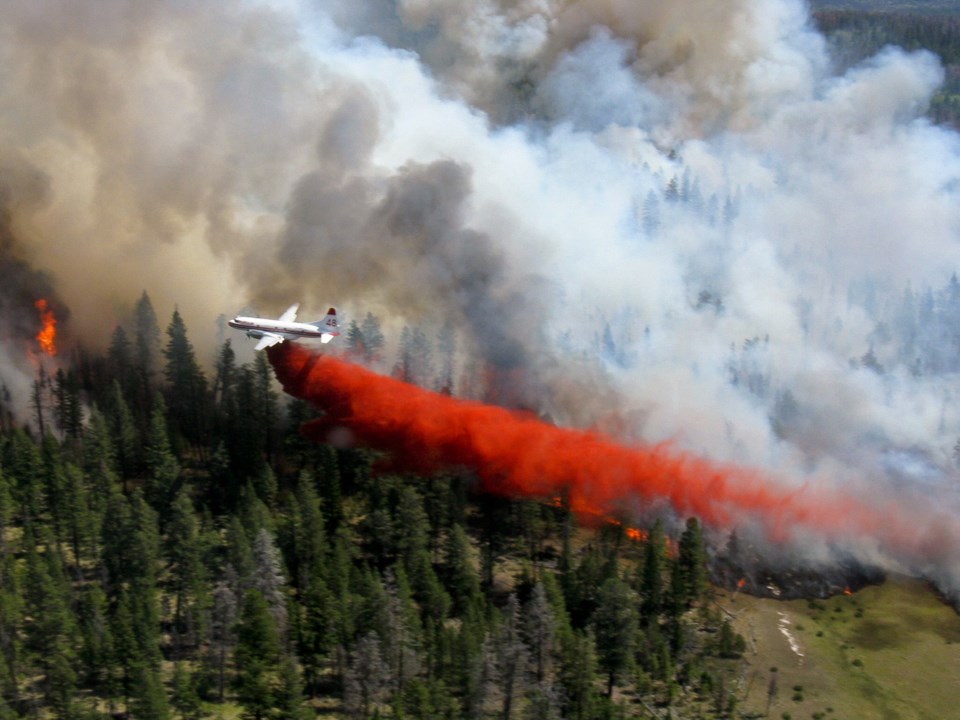The past two summers saw B.C.’s worst wildfire seasons on record, with more than 25,000 square kilometres burned.
They also accelerated a two-decade-long trend that has seen B.C.’s forests shift from removing more carbon dioxide from the atmosphere than they released to emitting more carbon dioxide than they take up.
Until the early 2000s, B.C.’s forests served handily as a carbon sink. They took in more atmospheric carbon dioxide than they released, transforming it via photosynthesis into wood, which was then stored on the landscape for decades until fire, harvest or decomposition.
Then the mountain pine beetle struck. The epidemic, which affected more than 14 million hectares of pine forest in B.C., cut the legs out from under the province’s — and Canada’s — position as a climate do-gooder. That position had been assumed based on the forests’ carbon-sequestering capacities.
Between 2003 and 2016, mountain pine beetle, wildfire and other natural disturbances in B.C. forests emitted between 25 and 80 megatonnes of greenhouse gases each year. In 2017, Natural Resources Canada reported the province’s fires that year alone released about 190 million tonnes of greenhouse gases — nearly triple B.C.’s total annual carbon footprint.
That renewed calls for B.C. to include wildfire emissions in its greenhouse-gas inventory, the province’s official, annual carbon footprint that the government uses to inform climate strategies and emissions targets. The government reports wildfire emissions, but, because they’re from natural disturbances not human activities such as timber harvesting, does not include them in the inventory. Without those natural-disturbance effects on CO2 emissions, the inventory suggests the forests are soaking up more carbon than they are releasing.
While ignoring the effects of natural disturbances on B.C.’s carbon footprint won’t help slow climate change, Werner Kurz, a researcher with Natural Resources Canada in Victoria and a lead author on several Intergovernmental Panel on Climate Change reports, says good reasons exist for monitoring and measuring emissions from natural disturbances separately from those from human-caused forest emissions.
Significant natural disturbances cause large, variable swings in greenhouse-gas emissions from B.C. forests. When those emissions are modelled, Kurz says, “the signal from natural disturbances so overwhelms the signal from managed forest activity that all you see is the effect of natural disturbances. It’s very difficult to get a sense of trends or outcomes of mitigation efforts.”
In a recent paper, Kurz and his team proposed a way to separate the two forest-emissions sources.
“We want to clarify the signal for reporting purposes and also because we’re investing resources into improving forest-activity mitigation options. Part of what we’re trying to do is see if these show up and where. For example, B.C. has a forest carbon initiative of $290 million for things like rehabilitation, forest fertilization and other activities. That investment is designed to achieve a lot of outcomes, including improving the carbon balances, but we won’t know how effective the efforts are for those balances unless we can zero in on their signal.”
The study’s results cover the period 1990-2016, and include estimates of the delayed release of greenhouse-gas emissions from wood used to build, for example, houses, furniture or shipping pallets that are later demolished or thrown out.
The results show that in the early 1990s, human activities in Canada’s managed forests created a carbon sink equal to about 210 megatonnes, decreasing to about 175 megatonnes by 2016. The human-activity signal even captures the drop in logging that occurred because of the global economic crisis.
When combined with emissions from natural disturbance, however, those nuances disappear. The human-caused effects lower the total annual forest emissions, but emissions from natural disturbances take over the signal pattern.
As with all information, refined measurements provide a clearer picture of how, exactly, the province’s forests are contributing to atmospheric CO2 levels. Ignoring emissions from natural disturbances might make it easier for a province or country to pat itself on the back. It might please people working in CO2-effusive industries and make it easier for governments to be re-elected.
However, it won’t help anyone prepare for or determine how forest-related activities can help slow the spiralling feedback effects of global climate change.



